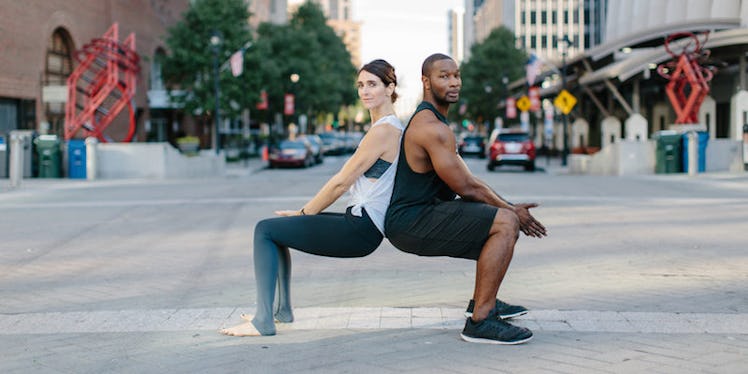Love 'em or hate 'em, squats are seriously good for you.
They can tone your lower body (and your body overall), improve the health of your bones and joints, contribute to good posture, aid in everyday activities and boost athletic performance.
For serious athletes, squats also provide an opportunity to develop some major strength gains.
If you're already convinced of the power of squats and have been squatting for some a while now, then it's time to take your routine to the next level.
These three programs will kick your butt, and in return, you'll be fitter, stronger and more empowered to take on your next challenge in the gym.
1. Smolov
This world-famous squat routine became popular in the US in 2001 thanks to an article published in Powerlifting USA.
There's some debate over its original source, but one thing is certain: Smolov is not for the faint of heart.
The 13-week program is divided into five distinct cycles: Phase In or Intro, Base, Switching, Intense and Tapering.
Different sources offer different variations on Smolov, but the general premise is as follows:
- Phase In/Intro: getting your body used to frequently performing heavy squats
- Base: performing heavy squats four days a week
- Switching: scaling back the load just a bit in order to prioritize speed out of the bottom of the squat
- Intense: dialing up the weight load intensity
- Tapering: rejuvenating in preparation for the one rep max test at the end of the program
In addition to the classic Smolov program, there's also a Smolov Jr. program that's shortened to three weeks.
The program requires high-volume, high-frequency lifts four days per week.
It won't result in the same gains as Smolov, but it may be a good option for athletes who aren't ready for the intensity of the original routine.
2. Russian Squat Program
This proven routine has been around for a long time, and it's a favorite among professional athletes as well as dedicated lifters.
It's a six-week program that requires squatting three times a week for a total of 18 sessions.
The first nine sessions involve progressively lifting more volume at a load that's 80 percent of your starting one rep max, while the latter nine sessions focus on tapering toward a new max.
The program is less intense than Smolov (almost anything is), but it's still intended for legitimate athletes.
While gains will vary, it's not unlikely to see more than 5 percent gains on whatever your one rep max was before starting the program.
3. 20-Rep Squat Routine
This tried-and-true routine has been around since the 1960s.
The six-week program requires squatting three times each week with one set of 20 squats in each workout.
Here's the twist: For each of these 20-rep sessions, you add 5 pounds to the bar.
Participants calculate their starting weight by subtracting 5 pounds from their five-rep max for every workout that will be performed over the six weeks.
This means by the end of the program, you should be squatting your original five-rep max 20 times.
Not surprisingly, the program results in significant muscle and strength gains.
These are three serious squat routines for seasoned athletes, and it's important to treat them as such.
Before embarking on any of these programs, keep the following in mind:
- If you don't already squat regularly and progressively, take time to develop a routine before tackling any of these more intense programs.
- If you're performing any of these programs, you almost certainly won't need to do any other concurrent leg work.
- To ensure that you're progressing through the program appropriately, keep track of your progress using a tailored squat calculator.
- Remember to fuel properly during any of these programs.
For Smolov specifically, keep in mind this is a shock cycle. It's not intended for multiple completions in a year.
While these programs vary in intensity, all of them require a serious commitment to powering through some discomfort.
The payoff? In a relatively short time, you'll have elevated your squat routine and achieved serious muscle and strength gains.
